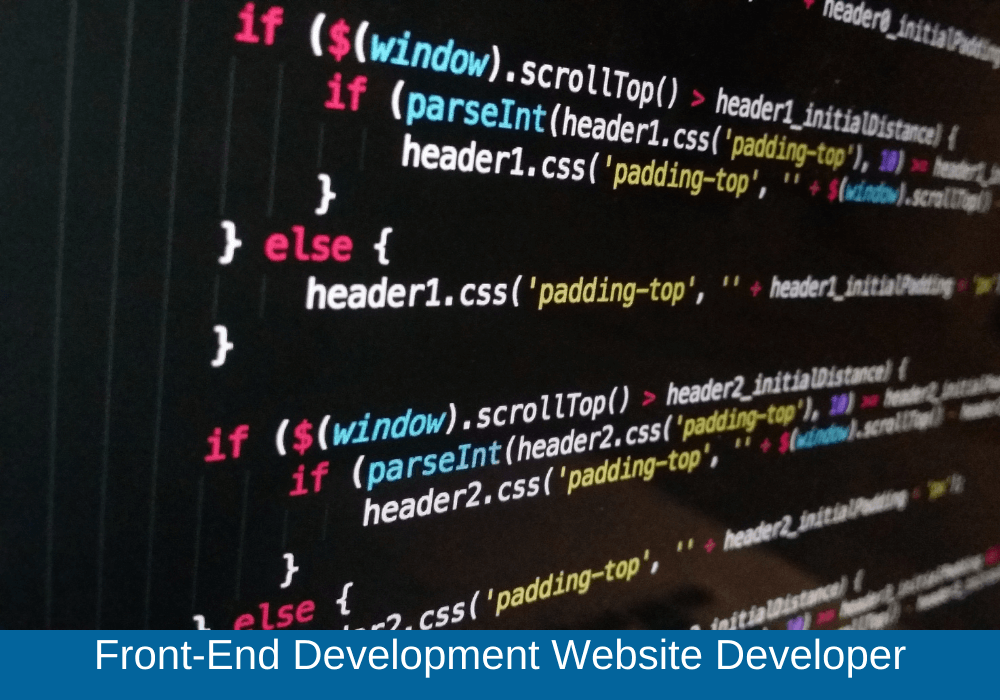Introduction to Front-End Development
Website Developer is the backbone of the web, combining design, technology, and psychology to create compelling user interfaces. It’s where code meets creativity, transforming wireframes and designs into interactive, user-friendly web pages and applications
Professional Freelance WordPress Designer & Developer
Front-End Website Developer
What is Front-End Development?
Front-End Development refers to the part of web development that involves creating the visual and interactive aspects of a website or web application — the parts users see and interact with.
The Role of a Front-End Developer
Front-End Developers are the architects of the web experience, tasked with translating design concepts into functional websites using HTML, CSS, and JavaScript.
Hire a freelancer for website design and development

Tools and Technologies
Key Technologies
Front-End Development Website Developer hinges on three core technologies: HTML for structure, CSS for styling, and JavaScript for functionality.
HTML: The Structure
HTML lays the foundation of web pages, structuring content with elements like headings, paragraphs, and images.
CSS: The Style
CSS brings visual appeal to the HTML structure, allowing developers to style elements, control layouts, and adapt the design to different screen sizes.
JavaScript: The Interactor
JavaScript adds interactivity to web pages, enabling dynamic content, user input handling, and real-time updates without needing to refresh the page.
Front-End Development Website Developer
Frameworks and Libraries
Frameworks and Libraries like React, Angular, and Vue.js have revolutionized Front-End Development, offering reusable components and accelerating development processes.
Website Development Freelancer Near Me | Hire Top Indian Freelancer
The Importance of Front-End Development Website Developer
User Interface (UI) Design
UI Design focuses on the look and layout, ensuring the interface is aesthetically pleasing and easy to navigate.
User Experience (UX) Design
UX Design goes deeper, optimizing the interaction between users and the website to ensure a seamless, intuitive user journey.
Responsive Design
Responsive Design ensures websites look and function perfectly across all devices, from desktops to smartphones.
Front-End Development Best Practices
Code Organization
Organizing code efficiently makes it easier to maintain, update, and collaborate with others.
Performance Optimization
Optimizing for performance improves load times and responsiveness, enhancing the user experience.
Accessibility Standards
Adhering to accessibility standards ensures websites are usable for everyone, including those with disabilities.
Front-End Development Website Developer
Emerging Trends
The future of Front-End Development is bright, with advances in AI, machine learning, and interactive design shaping the next generation of web experiences.
Hire Top freelancer Web Developer
Best Front end development skills
Expertise in HTML/CSS: A great front-end developer should be proficient in HTML and CSS to create well-structured, visually appealing, and responsive web pages.
JavaScript Proficiency: They should have strong skills in JavaScript and popular libraries or frameworks like React, Vue.js, or Angular to build interactive and dynamic user interfaces.
Responsive Design: The ability to design and implement websites that work well on various devices and screen sizes is crucial.
Cross-Browser Compatibility: Ensuring that websites function correctly across different browsers and platforms is essential.
Performance Optimization: Knowledge of techniques to improve website loading times and overall performance is important.
Version Control Systems: Experience with version control systems like Git is important for collaboration and code management.
UX/UI Design Principles: Understanding user experience (UX) and user interface (UI) design principles helps in creating intuitive and user-friendly interfaces.
Problem-Solving Skills: The ability to troubleshoot and resolve issues effectively is a valuable skill.
Communication and Collaboration: Good communication skills and the ability to work well with designers, back-end developers, and other team members are essential.
Continuous Learning: The web development field evolves rapidly, so a top front-end developer should be committed to continuous learning and staying up-to-date with the latest trends and technologies.
Conclusion
Front-End Development is an ever-evolving field that combines aesthetics with functionality. By staying ahead of trends and adhering to best practices, developers can create dynamic, user-friendly websites and applications that stand the test of time.
